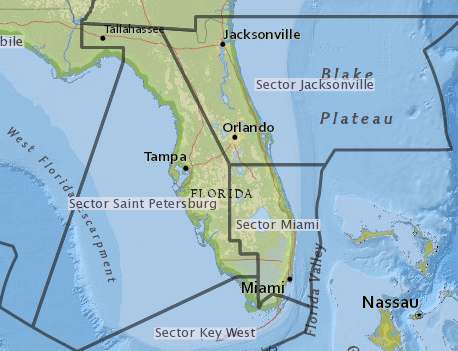Emergency Support Function 10 oversees assessments of Florida's ports and waterways in aftermath of Hurricane Irma
U.S. Coast Guard sent this bulletin at 09/23/2017 07:14 PM EDT
| News Release |
U.S. Coast Guard U.S. Coast Guard Press inquiries: MariaUSCGD7@gmail.com |
Emergency Support Function 10 oversees assessments of Florida's ports and waterways in aftermath of Hurricane Irma
 |
 |
 |
 |
Editors' Note: Click on images to download a high-resolution version.
MIAMI -- Emergency Support Function 10 (ESF 10) Florida, consisting of multiple state and federal agencies, has stood up with the mission of overseeing the assessment, mitigation and removal of hazardous materials from Florida’s ports and waterways in the aftermath of Hurricane Irma.
The Unified Command consists of U.S. Coast Guard Cmdr. JoAnne Hanson serving as Incident Commander, Mr. Benjamin Franco, Environmental Protection Agency (EPA) Incident Commander, Florida Fish and Wildlife Conservation Commission (FWC) Capt. David Schaffer as State On-Scene Coordinator and Florida Department of Environmental Protection (FDEP) Environmental Administrator Kent Edwards as State On-Scene Coordinator. Currently, response teams are conducting assessments of the most affected areas to include the ports and waterways of Miami, St. Petersburg, Key West and Jacksonville, Florida.
“While we conduct these pollution assessments, our number one priority is the safely of our responders and the public affected by these potential hazards,” said Hanson. “Our objective is the complete assessment and mitigation of all hazardous materials and substances to include displaced vessels as a result of the hurricane.”
During these assessments, a higher priority is placed on vessels found to be actively leaking pollution. As teams locate emergent pollution situations, immediate action is taken to contain the material and remove it from the environment. Vessels that are damaged or sunk may be removed and taken to a staging area.
The ESF 10 is the framework by which federal support is coordinated with state agencies in response to actual or potential oil spills or hazardous material releases. Partner agencies, including Florida Keys National Marine Sanctuary are contributing expertise and experience to the assessment efforts.
“The Florida Keys National Marine Sanctuary continues to work with Monroe County, the State of Florida, the Coast Guard, and other agencies involved in recovery and cleanup efforts to address pollution threats from vessels and other debris,” said Sarah Fangman, Superintendent for the Florida Keys National Marine Sanctuary. “Sanctuary staff are working to ensure that potential impacts to sanctuary resources are considered during cleanup operations. Sanctuary staff are assisting with assessments of damage to property and natural resources and the development of mitigation options to address resource impacts. We will continue to work with our longstanding partners to address the variety of impacts, pressures and threats to the Florida Keys ecosystem and our community.”
Damaged vessels are being tagged by assessment teams with a sticker requesting those owners contact the FWC to either report their vessel’s removal or to request Coast Guard assistance in its removal.
The following list represents an approximate number of vessels impacted by Hurricane Irma currently being assessed by each ESF 10 Branch Hazardous Material Assessment Team as of Sept. 23, 2017. These numbers are subject to change as more owners salvage their vessels and additional vessels are discovered in the affected areas. The figures stated below concern on-land and on-water assessments are not indicative of offshore assessments, which are scheduled to commence Sept. 24, 2017, pending weather conditions.
Miami
- Vessels assessed: 200; Vessels removed: 16
St. Petersburg, Florida
- Vessels assessed: 167; Vessels removed: 24
Jacksonville, Florida
- Vessels assessed: 134; Vessels removed: 26
Key West, Florida
- Vessels assessed: 247; Vessels removed: 0
Each response branch is established according to the Coast Guard sector boundaries as detailed below.
 |
-USCG-

